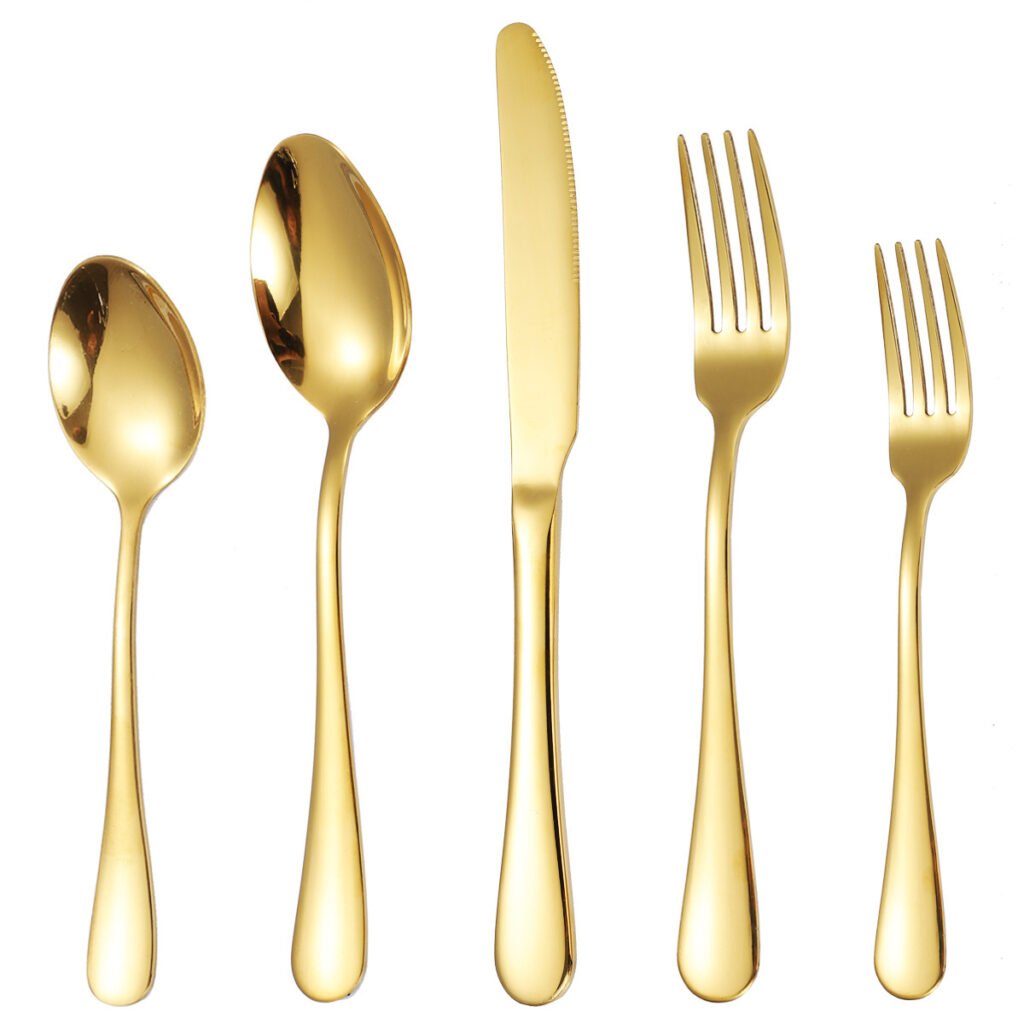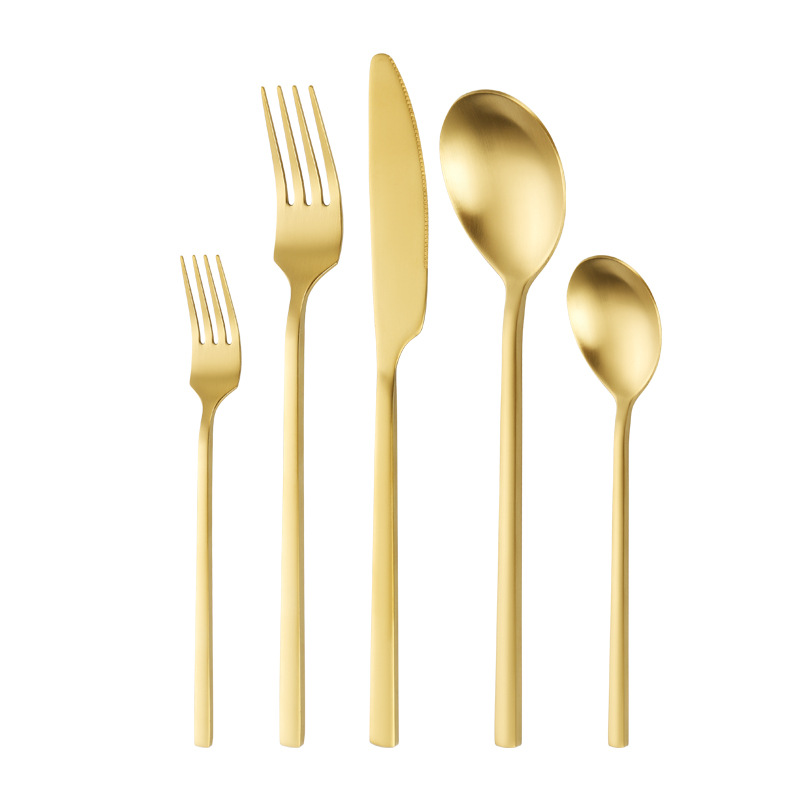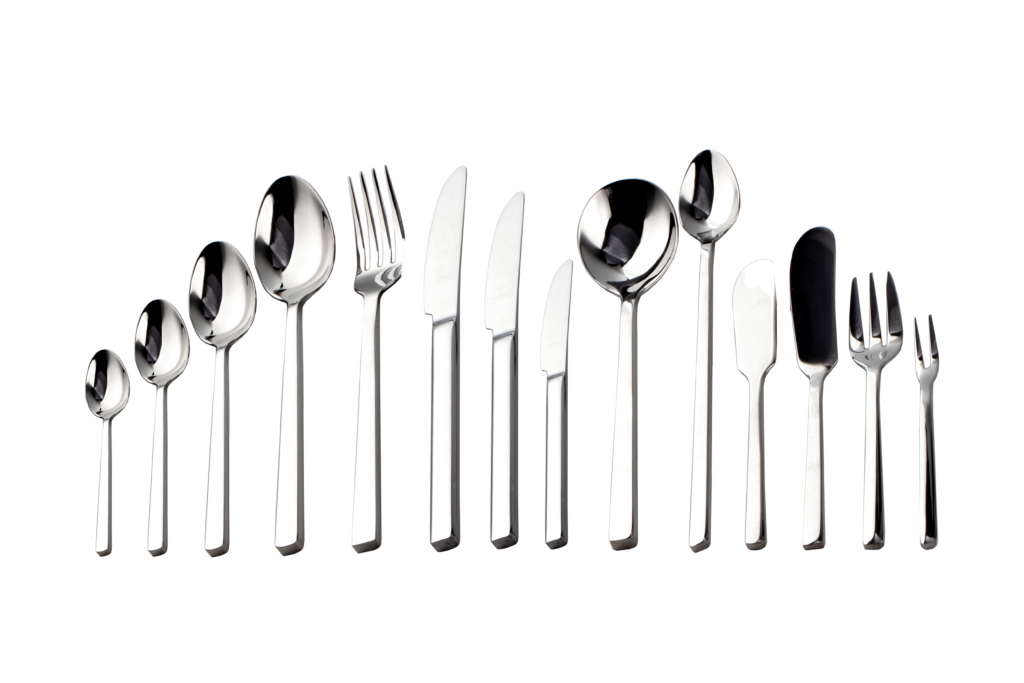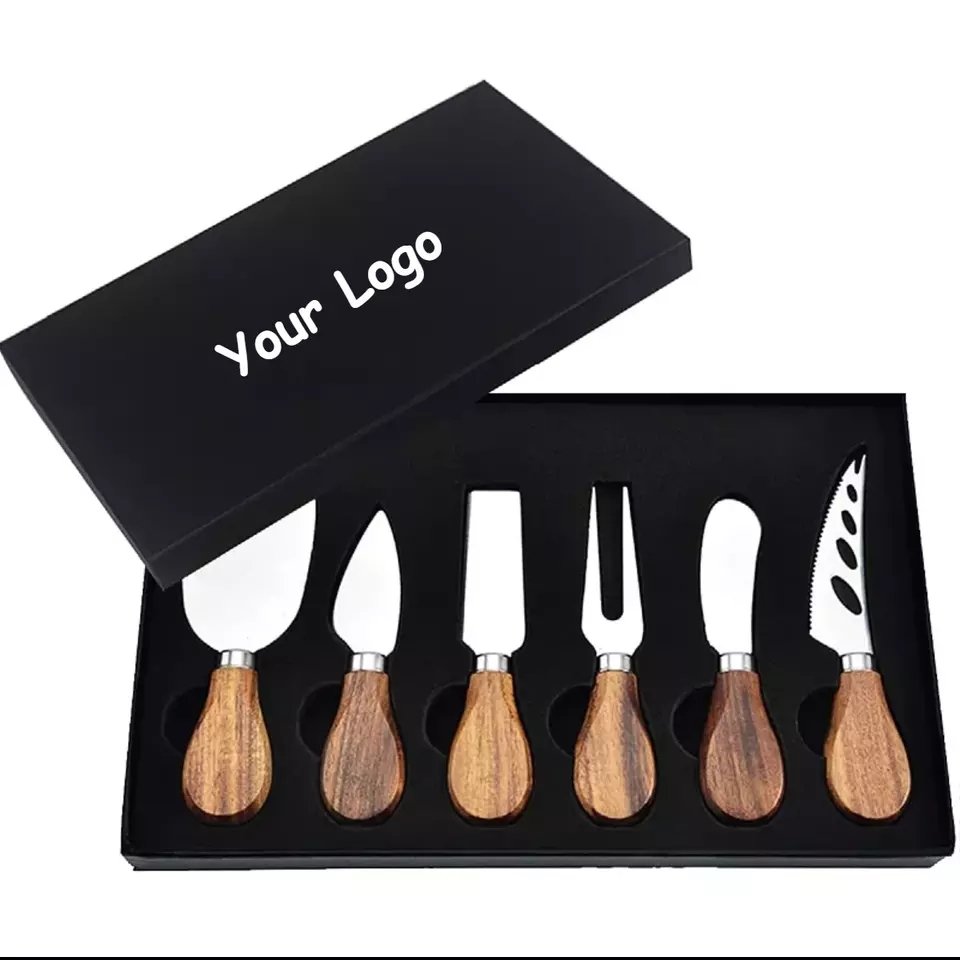Finding the right restaurant flatware supplier can make or break your dining experience. In a world of numerous options, how do you choose the best one?
Choosing the right restaurant flatware supplier is crucial to your restaurant’s success. Quality, cost, and reliability are the key factors to consider when selecting a supplier.
But with so many suppliers out there, how do you make sure you’re choosing the right one for your restaurant? Let’s dive into what to look for when selecting your flatware supplier.
Table of Contents
What Makes a Restaurant Flatware Supplier Reliable?
Reliability is crucial when selecting a flatware supplier for your restaurant. Without a dependable supplier, your restaurant could face costly delays and stockouts.
A reliable flatware supplier should offer consistent delivery, good customer service, and high-quality products. It’s also important to have clear communication and strong partnerships in place.
When evaluating a flatware supplier’s reliability, consider the following aspects:
Delivery Time
It’s vital that the supplier meets your order deadlines. Restaurants rely on their flatware to operate smoothly, and delays can disrupt operations. A reliable supplier should offer precise delivery timelines and be transparent about any potential delays.
Customer Service
You need a supplier who responds quickly and effectively when issues arise. Whether it’s a damaged order or a last-minute change, having good customer service ensures your concerns are addressed promptly.
Consistency in Quality
Flatware sets a tone for your restaurant’s dining experience. High-quality, durable flatware can withstand constant use without showing wear and tear. Make sure your supplier provides consistent quality with every order.
| Aspect | Importance | How to Check |
|---|---|---|
| Delivery Time | Ensures smooth operations | Ask for past customer experiences |
| Customer Service | Resolves issues quickly | Test their responsiveness with inquiries |
| Consistency in Quality | Essential for maintaining the brand image | Request product samples or review quality checks |

How to Assess the Quality of Flatware?
When purchasing flatware, quality is everything. Poor-quality flatware can affect your restaurant’s reputation and customer satisfaction.
Quality flatware should feel solid, be resistant to corrosion, and maintain its finish over time. Here are the key factors to assess.
Evaluating the quality of flatware goes beyond just looking at its appearance. Several important factors determine the durability and functionality of flatware.
Material Used
The material of flatware impacts its strength, rust resistance, and overall longevity. Stainless steel is the most popular option for restaurant flatware. The higher the grade of stainless steel, the more resistant it is to corrosion and damage.
Finish and Coating
The finish or coating on flatware affects its shine and how long it retains its pristine appearance. Matte finishes are popular for a sleek, modern look, while polished finishes give a more traditional, shiny appearance. It’s essential to check if the finish resists tarnishing and scratching.
Weight and Balance
Flatware should feel comfortable in the hand. Light or flimsy cutlery can negatively affect the dining experience. A well-balanced piece not only looks better but also offers a more satisfying grip.
| Quality Factor | Why It Matters | How to Evaluate |
|---|---|---|
| Material | Impacts durability and rust resistance | Look for higher grades of stainless steel |
| Finish | Affects appearance and wear resistance | Check for tarnishing, fading, or scratches |
| Weight and Balance | Enhances customer experience | Test by holding and using the flatware yourself |
What Are the Benefits of Custom Flatware for Restaurants?
Custom flatware can help elevate your restaurant’s branding and create a unique dining experience for your customers. But is it worth the investment?
Custom flatware adds a personal touch to your restaurant, aligning with your brand’s theme. It’s an investment that can enhance the overall dining experience and boost brand recognition.
Custom flatware is more than just a stylish addition; it has several key benefits for restaurants.
Brand Identity
Custom flatware can reflect your restaurant’s theme, enhancing the overall dining experience. Whether it’s a modern, elegant design or something more rustic, the right flatware can strengthen your brand identity and set you apart from competitors.
Enhanced Customer Perception
Customers often notice small details, and unique flatware can leave a lasting impression. High-quality, customized pieces demonstrate that your restaurant values the experience and attention to detail.
Durability and Uniqueness
Many restaurants use custom flatware as a way to ensure long-lasting, durable pieces that stand out. Custom designs allow for the use of premium materials and unique shapes that aren’t available in mass-produced flatware.
| Benefit | Description | How It Adds Value |
|---|---|---|
| Brand Identity | Reinforces your restaurant’s style | Custom designs tie into your restaurant’s theme |
| Customer Perception | Creates a memorable experience | Customers appreciate high-end, unique designs |
| Durability and Uniqueness | Ensures longevity and distinctiveness | Custom-made pieces are built to last and stand out |
What kind of flatware do restaurants use?
When it comes to flatware, restaurants require pieces that are both functional and aesthetically appealing. But what exactly do they use to meet these demands?
Restaurants typically use high-quality stainless steel flatware, as it’s durable, resistant to corrosion, and complements various table settings. The design of flatware is also crucial to enhance the dining experience.
Restaurants often invest in flatware that aligns with their theme and customer expectations. Here are the types of flatware commonly used in restaurants:
Standard Flatware
Most restaurants use standard stainless steel flatware, which includes basic knives, forks, and spoons. This flatware is designed for durability and ease of use during service.
High-End Flatware
Fine-dining restaurants often opt for premium flatware with polished finishes or intricate designs. These pieces not only serve a functional purpose but also add to the restaurant’s ambiance and luxury feel.
Specialized Flatware
Some restaurants, especially those with specific menu offerings, may use specialized flatware. For example, seafood restaurants often feature lobster picks, oyster forks, and specialized knives for cutting delicate meats.
| Flatware Type | Common Use | Advantages |
|---|---|---|
| Standard Flatware | Everyday use in casual dining restaurants | Durable, cost-effective, easy to maintain |
| High-End Flatware | Fine-dining restaurants and luxury hotels | Elegant design, enhances customer experience |
| Specialized Flatware | Restaurants with niche menus (e.g., seafood) | Custom-designed for specific needs |

How often do restaurants get new silverware?
Flatware in restaurants goes through a lot of wear and tear. So, how often should restaurants replace their silverware to keep everything looking pristine?
Restaurants typically replace their silverware every few years, depending on the frequency of use and the wear it endures. This ensures that the flatware maintains its appearance and function.
Replacing silverware is an essential part of restaurant maintenance. The frequency depends on various factors:
Frequency of Use
Restaurants with high traffic will need to replace silverware more often than those with fewer customers. Daily use leads to more wear, making it necessary to regularly inspect flatware for damage.
Quality of Flatware
Higher-quality flatware tends to last longer, even under heavy use. Cheaper, low-grade silverware may require more frequent replacement due to issues like rust or damage.
Customer Perception
Replacing old or damaged silverware also has an impact on customer perception. Fresh, well-maintained flatware can improve the overall dining experience and show that the restaurant cares about its presentation.
| Factor | Impact on Replacement Frequency | Recommended Action |
|---|---|---|
| Frequency of Use | Higher use = faster wear | More frequent inspection and replacement |
| Quality of Flatware | High-quality pieces last longer | Invest in durable, high-quality flatware |
| Customer Perception | Old or damaged silverware impacts experience | Regularly update and maintain flatware |
What's the difference between silverware and flatware?
The terms “silverware” and “flatware” are often used interchangeably, but do they actually mean the same thing? Let’s clear up the confusion.
While both terms are often used to describe dining utensils, “silverware” generally refers to utensils made of silver, while “flatware” refers to all utensils, regardless of material.
Understanding the difference between silverware and flatware can help when selecting the right utensils for your restaurant. Here’s a closer look at the two:
Silverware
Silverware specifically refers to utensils made from silver or a silver-plated material. It has a luxurious appeal and is typically used in fine-dining restaurants, where presentation is key.
Flatware
Flatware is a broader term that includes all types of dining utensils such as knives, forks, and spoons, regardless of the material used. This includes stainless steel, plastic, or even wooden utensils.
Terminology Confusion
In casual conversation, “silverware” is often used to refer to flatware in general, even when it’s made from materials like stainless steel. However, when discussing materials, silverware refers strictly to those made from silver.
| Term | Definition | Common Usage |
|---|---|---|
| Silverware | Made from silver or silver-plated materials | Fine dining, special occasions |
| Flatware | All types of dining utensils | General term for cutlery in restaurants |
What is cutlery used in restaurants also called?
Cutlery is a term we all recognize, but did you know there are different names for the same items in the restaurant world? Let’s explore the alternatives.
In restaurants, cutlery can also be referred to as flatware or silverware, depending on the material and the context. These terms are often used interchangeably but have subtle distinctions.
Cutlery in restaurants may go by several names. Here’s a breakdown of the most common terms used:
Cutlery
“Cutlery” refers to the entire set of dining utensils, such as knives, forks, spoons, and serving tools. It’s the most commonly used term worldwide.
Flatware
As mentioned earlier, “flatware” is often used interchangeably with cutlery, though it technically refers to flat utensils like knives, forks, and spoons.
Silverware
Silverware, although often used to describe cutlery, is specifically associated with silver or silver-plated utensils. The term has become synonymous with cutlery in casual language.
| Term | Description | Usage |
|---|---|---|
| Cutlery | General term for dining utensils | Common worldwide, both formal and casual |
| Flatware | Typically refers to flat dining utensils | Used in restaurants and formal settings |
| Silverware | Cutlery made from silver or silver-plated | More formal, used in upscale dining |
What stainless steel is used in restaurants?
Stainless steel is the go-to material for restaurant flatware. But not all stainless steel is the same. So, what type is best for restaurant use?
Restaurants typically use 18/10 stainless steel for flatware. This alloy is known for its strength, rust resistance, and attractive finish, making it ideal for heavy use.
Stainless steel is an excellent material for restaurant flatware due to its durability and resistance to corrosion. Here’s what makes the best type of stainless steel for restaurants:
18/10 Stainless Steel
18/10 stainless steel is the most commonly used grade for restaurant flatware. The “18” refers to the percentage of chromium, which makes the steel resistant to corrosion, and the “10” refers to the percentage of nickel, which gives the steel its shine and strength.
18/0 Stainless Steel
18/0 stainless steel is a more affordable option, but it lacks the nickel content that gives 18/10 its luster. While it’s still durable, it may not be as resistant to rust and corrosion over time.
Benefits of Stainless Steel
Stainless steel’s resistance to stains, rust, and wear makes it perfect for restaurants. It also offers a high level of hygiene, making it easy to maintain cleanliness and safety in a foodservice environment.
| Stainless Steel Type | Composition | Benefits |
|---|---|---|
| 18/10 | 18% chromium, 10% nickel | High strength, corrosion-resistant, shiny |
| 18/0 | 18% chromium, 0% nickel | Affordable, durable, but less shiny |
| Stainless Steel | Varies by grade and alloy | Rust-resistant, easy to clean, durable |

How much flatware for a restaurant?
A common question for restaurant owners is, “How much flatware do I need?” It’s not just about having enough; it’s about managing wear and ensuring you’re always ready for your guests.
The amount of flatware required for a restaurant depends on the size of the establishment and the frequency of service. On average, you’ll need 3-5 pieces of flatware per customer to account for normal wear, replacements, and cleaning cycles.
When determining how much flatware a restaurant needs, several factors come into play. Here’s how you can figure it out:
Restaurant Size and Type
A small, casual restaurant may need fewer pieces of flatware, while larger establishments, especially fine-dining or buffet-style restaurants, will require much more. The type of service also matters; for instance, a high-turnover restaurant may need extra utensils for quick service, while a fine-dining venue will likely keep a more polished set.
Frequency of Service
A restaurant’s service hours will impact how much flatware is needed. If the restaurant operates throughout the day with a high volume of customers, it’s essential to have enough flatware to minimize wait times and avoid running out during service hours.
Flatware Rotation
It’s not just about how much you need, but also about managing the rotation of your flatware. A general rule of thumb is to have 3-5 pieces of flatware per customer. This includes extras for daily wear and tear, replacement during service, and backup for cleaning and maintenance.
| Factor | Impact on Flatware Needs | Recommended Action |
|---|---|---|
| Restaurant Size | Larger restaurants need more flatware | Estimate based on capacity and turnover |
| Service Frequency | More service hours = more flatware | Plan for backup sets during peak hours |
| Rotation System | Higher rotation = higher flatware demand | Keep track of usage and manage inventory |
Why do people use plastic silverware at restaurants?
Plastic silverware may seem like a cheap alternative to traditional stainless steel. But why do many restaurants still use it? Let’s explore the reasons behind this decision.
Plastic silverware is commonly used in fast-food restaurants, catering events, and casual dining spots due to its convenience, low cost, and ease of disposal. It’s also a popular choice for outdoor dining or events where traditional flatware might be impractical.
While plastic silverware may not offer the same level of sophistication as stainless steel, it serves a very practical purpose in many settings. Let’s dive into the key reasons why restaurants choose plastic over traditional flatware:
Cost-Effectiveness
Plastic silverware is much cheaper than stainless steel, which makes it an appealing option for fast-food restaurants, cafeterias, and large-scale catering events. This helps cut costs while still offering a functional dining experience.
Convenience and Disposal
One of the biggest advantages of plastic silverware is its disposability. In casual settings like picnics, food trucks, or outdoor events, it’s much easier to dispose of plastic flatware, reducing cleanup time and labor costs. This convenience factor is a key reason why it’s still commonly used.
Durability for Specific Use-Cases
Plastic flatware is often used for lighter, non-fibrous foods that don’t require heavy-duty utensils. It’s ideal for casual dining situations where the food is less likely to damage the silverware, such as fast food or outdoor catering events.
| Reason | Impact on Use of Plastic Silverware | Recommended Setting |
|---|---|---|
| Cost-Effectiveness | More affordable, reducing overall expenses | Fast food, casual dining, catering |
| Convenience and Disposal | Quick to dispose of, saving time and effort | Outdoor events, food trucks, picnics |
| Durability | Works well for light, non-dense foods | For quick service, light meals |





